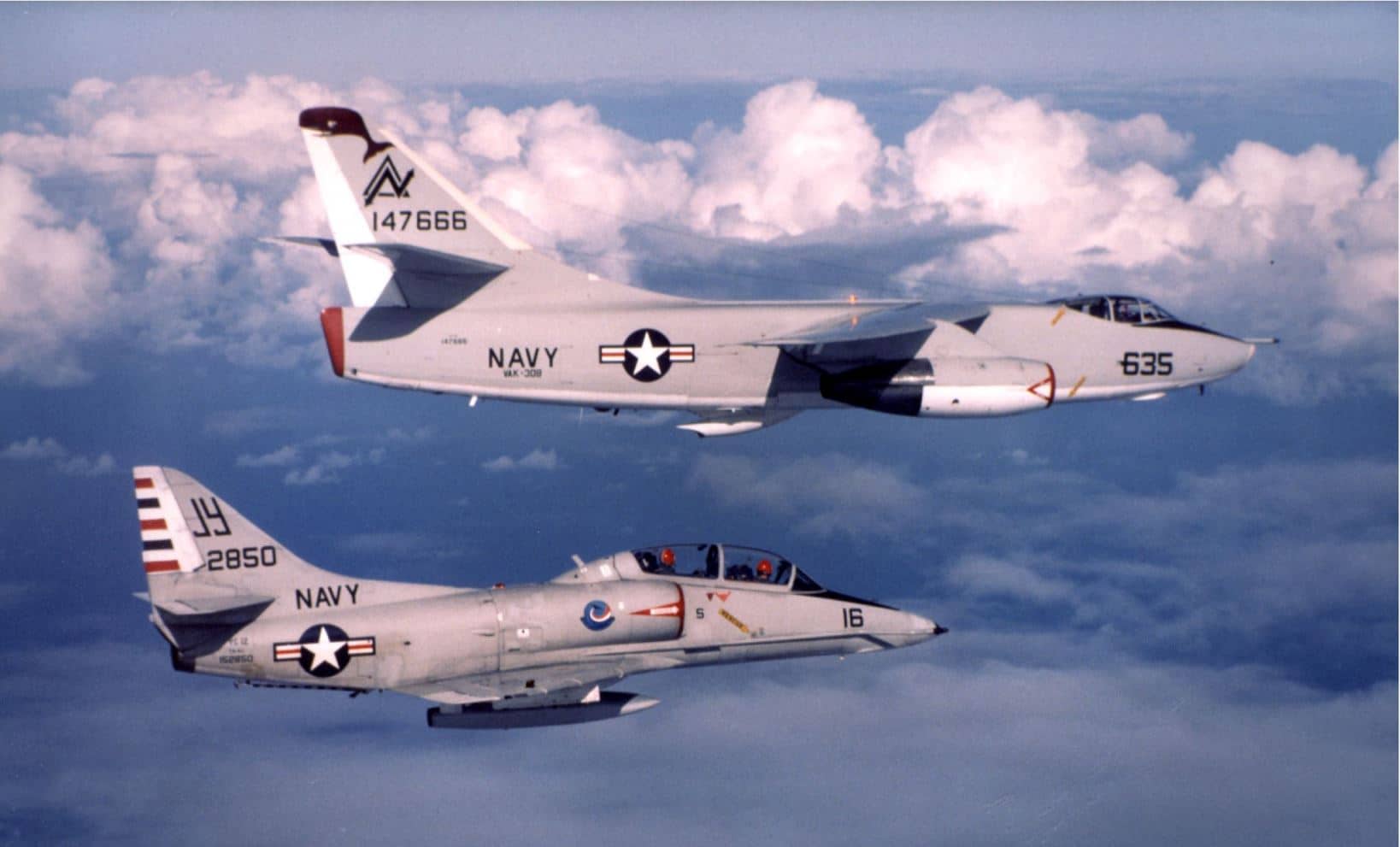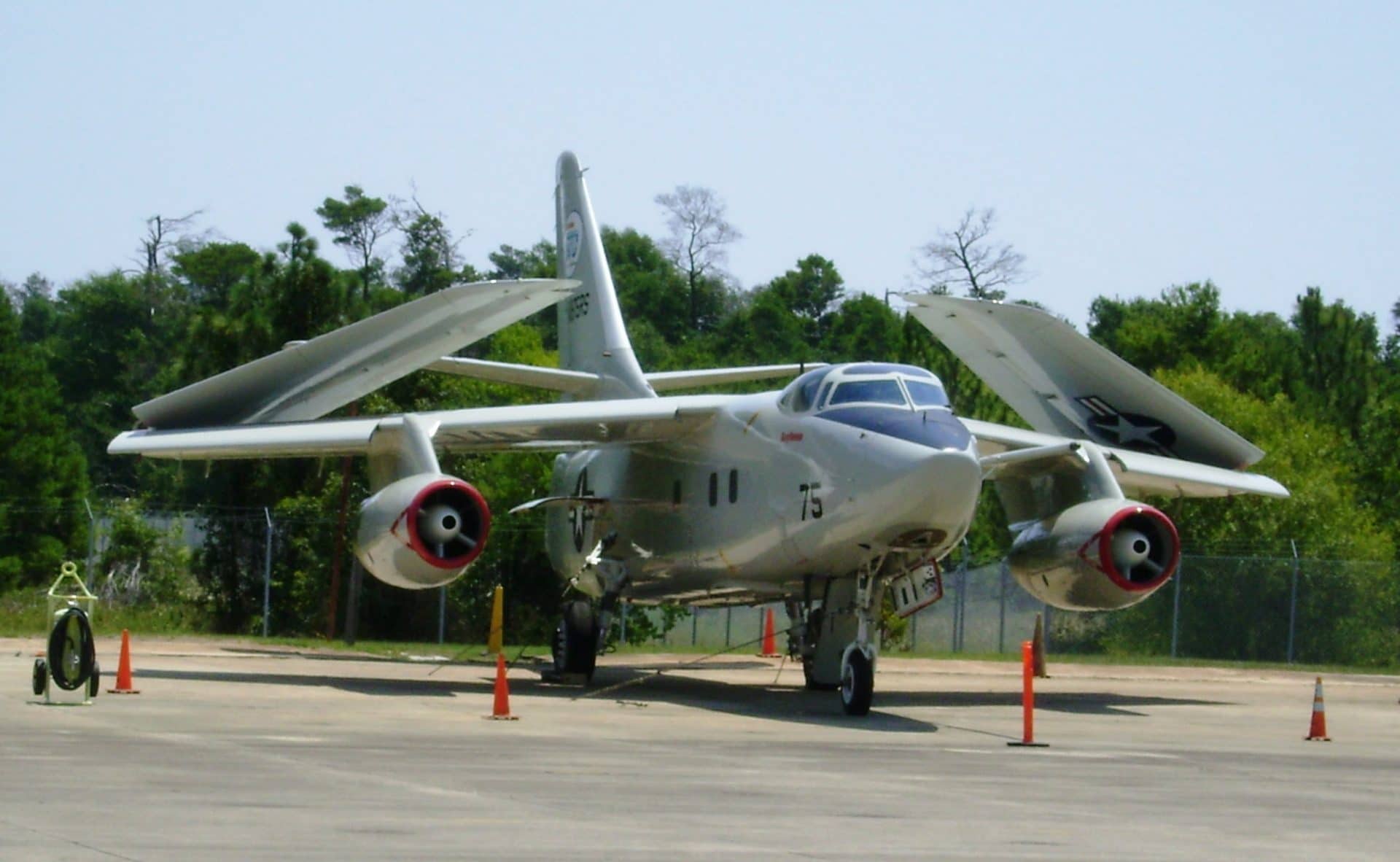Alphabet Soup
Once the Navy switched from carrier-based strategic bombers to Polaris missile submarines to fulfill its end of the nuclear deterrence equation, Skywarriors were adapted to perform several other roles for the fleet. Like every other aircraft in the inventory the Whale endured a top-to-bottom designator change in 1962. Alphabet soup anyone? Here goes: The basic attack A3D-1 became the A-3A. The photo reconnaissance A3D-1P became the RA-3A. The electronic warfare A3D-1Q became the EA-3A. The conventional attack A3D-2 became the A-3B. The photo reconnaissance A3D-2P became the RA-3B. The electronic warfare A3D-2Q became the EA-3B. The trainer A3D-2T became the TA-3B. The first A3D-2s (A-3Bs) were delivered to VAH-2 Royal Rampants in 1957. The A3D-2 featured uprated J57 engines, an inflight refueling system, and a larger bomb bay. The KA-3B, ERA-3B, EKA-3B, VA-3B, NRA-3B, NTA-3B, and a few others would come later.

To War in Vietnam
Between 1965 and 1967, A-3B Skywarriors were used for bombing and minelaying missions in Vietnam before smaller and lighter aircraft took on those missions The KA-3B tanker and EKA-3B hybrid electronic warfare / tanker versions of the Whale saw yeoman’s duty as gas-passers and saved more than one pilot by keeping fuel flowing into his damaged tanks until he was feet wet (over water and not Vietnam). Photo reconnaissance RA-3Bs flown by Heavy Photographic Squadrons (VAP)-61 World Recorders and VAP-62 Tigers captured photographic intelligence all over Southeast Asia. EA-3Bs were stalwart electronic support aircraft responsible for gathering electronic intelligence and jamming North Vietnamese ground control and missile guidance radars- tasks taken over at least in part from Marine EF-10B Skyknights.

Electronic Aggressors
Some TA-3Bs and VA-3Bs were (comparatively) well-appointed transports used by flag-level officers as VIP transports. The ERA-3B “electronic aggressors” of VAQ-33 Firebirds and VAQ-34 Electric Horsemen performed their roles in exercises worldwide and though based at CONUS air stations they were the gypsies of their communities. Skywarriors were modified and updated throughout their service lives and in many cases received entirely new designations fitting their modifications- sometimes more than once. Sprouting various lumps, bumps, and blades as their installed electronic equipment required, It wouldn’t surprise many to find there was a NREUTVKA-3BD in service at one point or another.

Retirement After Another War
Although they disappeared from carrier decks in 1987, Whales served with the two Navy reserve aerial refueling squadrons, VAQ-208 (later VAK-208) Jockeys and VAQ-308 (later VAK-308) Griffins, tanking Navy and Marine aircraft into the early 1990s. EA-3B Electric Whales of VQ-1 World Watchers and VQ-2 Batmen provided detachments of their Whales to deployed Carrier Air Wings for decades and some of them served during the 1991 Gulf War. Finally retired from Navy operational use on September 27th 1991, Whales proved to be some of the most versatile and adaptable aircraft in Naval service. But the Whale had not quite yet become extinct.

Whales in R&D Made Next-Gen Jets Better
Navy research and development organizations wanted to retain their Skywarriors used for aerial testing but it was not to be. However, Navy Whales had been used for years by companies like Hughes, Raytheon, and Westinghouse for development of radar, missiles, and electronic warfare systems to be used in newer tactical aircraft like the General Dynamics-Grumman F-111B, the Grumman F-14 Tomcat, and the McDonnell-Douglas (Boeing) F/A-18 Hornet. When the Navy retired the Whale a total of five civilian contractors acquired the remaining A-3 airframes and continued to use them for their development efforts.

The Last Whale
Whales flying around with the nose sections from other aircraft grafted on them and other strange bulges and shapes attached to noses and tails were fairly common occurrences until the mid-1990s when most of the remaining Skywarrior airframes went into storage. Except for an Air Force F-15 Eagle radar project, the Whales were grounded. Things went on more or less like that, with the Whales being displayed at airshows and compared to more modern designs (usually quite favorably for the Whales), until June 30th, 2011. On that date, after a short tour of former Whale air stations, the last flyable civilian EA-3D Skywarrior arrived at Naval Air Station (NAS) Pensacola in Florida for display at the National Naval Aviation Museum.

